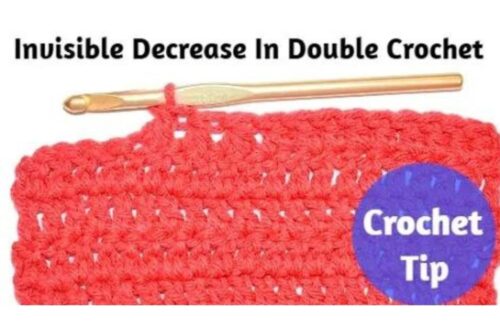
Beginner’s Guide: Avoiding Common Crochet Mistakes
Avoid Common Mistakes!
Embark on a journey of skill refinement and craftsmanship as you delve into our guide on avoiding common mistakes and elevating your crafting skills. Whether you’re a novice or a seasoned crafter, navigating through challenges is an inherent part of the creative process. Our guide will equip you with valuable insights, tips, and tricks to overcome hurdles and enhance your crafting prowess.
Crafting is a rewarding pursuit, but mistakes can also cause frustration. However, with the right knowledge and techniques, you can navigate common pitfalls and turn setbacks into opportunities for growth. From knitting mishaps to sewing blunders, we’ll provide you with practical strategies to troubleshoot issues and achieve professional results in your projects.
You’ll find affiliate links within this post. If you decide to purchase through these links, I may earn a modest commission at no extra cost. Additionally, please review my privacy policy for more details.
How to Crochet For Beginners Playlist — Click Here

1. **Uneven Stitch Count:** One of the most common mistakes beginners make is maintaining a consistent stitch count. This can lead to projects that gradually become wider or narrower. We’ll investigate why this happens and how to ensure your stitch count remains accurate throughout your work.
2. **Tight or Loose Foundation Chains:** Achieving the perfect tension in your foundation chain is essential for your project’s overall look and shape. We will discuss the importance of following the pattern’s gauge and avoiding making your foundation chain too tight or loose.
3. **Skipping the Edge Stitch:** Another standard error is overlooking the last stitch, the chain three at the edge, resulting in an uneven or curled edge. We’ll explore why this happens and how to maintain a straight edge by working into that final stitch.
4. **Working in Only One Loop:** Beginners may unintentionally work in either the front or back loop of their stitches when both loops are necessary for a complete and balanced stitch. We’ll explain the importance of working through both loops and when working in a single loop is appropriate.
*Crochet Tips for Beginners:*
1. **Count Your Stitches:** Professional stitch counting is the key to avoiding uneven stitch counts. We’ll provide tips on how to keep track of your stitches and recognize when you’ve made a mistake.
2. **Follow the Gauge:** Understanding the pattern’s gauge is crucial for achieving your project’s correct tension and size. We’ll discuss adjusting your tension to match the gauge provided in the pattern.
3. **Pay Attention to the Edge Stitch:** To maintain straight edges, you should always work into the last stitch, typically a chain three. We’ll emphasize the importance of this step and how it affects your finished piece.
4. **Work Through Both Loops:** We’ll continually remind beginners to work through both loops of their stitches; clarifying when working in a single loop might be appropriate.
One of the mistakes I made as a beginner was making my hats too wide at the bottom and forgetting to count my stitches. So, I didn’t trust my stitches, and I crocheted. This was supposed to be where I crocheted, and this one right here is my last stitch, so I double-crocheted here.
If I counted my stitches according to the pattern, I would know this was my last. However, I would go into my chain three and do one more double crochet. Then, I would slip stitch on top of that chain two, or if this is a chain three, I know this one’s a chain two. And then it would get broader because it was like I was doing an increase here when I was only supposed to do a double crochet and stop instead of another one in the chain three. So, as a beginner crocheter, you need to count your stitches, or you will make it more comprehensive, and your hat will get bigger and bigger. I’ve had some crocheters ask me why their hat is getting bigger, and I know, as a beginner, I had the same issue because I wasn’t counting all my stitches. So if the pattern calls for 55 double crochets and you have 56, it’s because you’re probably doing an extra one right here. So that’s one mistake that crocheters make, and the way to correct that is always to make sure you count your stitches to ensure your stitch count is correct.
Another mistake I’ve made, and crocheters can make, is that we make our foundation chain too tight or too loose. Following the gauge if there’s a gauge in the pattern is essential. So if the indicator says it’s 12 double crochets in a 4‑inch by 4‑inch space, and you’re way over or under it, you’re probably crocheting too tight or loose. If your tension is too fast, your work might look like this, and if it’s too loose, it might look like this. The goal is to find the right balance, so check the gauge if the pattern provides one. This will help you avoid making your foundation chain too tight or too loose, which can cause your project to curl at the ends.

Click Here for the Crochet Bowl Pattern
Another mistake crocheters make is when they reach the end. They’ll double crochet in this last double crochet, but then they stop because they think the chain three gets skipped, and it doesn’t complete the edge. It’s always important to count your stitches, but you also have to work into that last stitch, which is chain three. This will make your edge straight. So now your edge is straight, and then you can chain three again and turn. So it’s essential to work into that chain three at the edge to maintain a straight edge and count your stitches.
Another mistake beginners make is working in only one of the loops, either the front or back loop of their stitches. It’s essential to complete the stitch by working through both loops. Your stitches should look like a “V,” to make a complete stitch, whether it’s a single, a half, or a double crochet, you should work through both of these loops. Only work through the front or back loop if the pattern explicitly calls for it.
Print the entry at the top of the page to print the pattern!
Crocheting is a versatile and enjoyable craft, but it’s natural for beginners to encounter challenges along the way. You can greatly enhance your crochet skills by being aware of and addressing common mistakes such as uneven stitch counts, foundation chain tension, edge stitch oversight, and working in only one loop. The tips and insights provided in this guide serve as valuable tools to help beginners overcome these obstacles and create beautiful, well-crafted crochet projects. With practice and patience, you’ll become a confident and skilled crocheter, able to tackle a wide range of patterns and designs.
To Find All My Crochet Jewel Patterns, Click Here







